Yinchuan (银川) is the capital city of Ningxia ( Ningxia Hui Autonomous Region ) in the northwest of China. If you are planning Yinchuan tour, Yichuan is your jumping-off point to other places in Ningxia and Alxa (Alashan) League in Inner Mongolia as well with its plentiful flights and trains connecting the major cities in China.
Yichuan itself is worth your exploration for 1-2 days with its unique landscape and historical sites. Sandwiched by Helan Mountains on the west and Yellow River on the east, Yichuan basin is a livable and beautiful place. It has survived the barren plains and stark mountains that characterize most of the areas in Ningxia.
Yinchuan is the ancient capital of Western Xia Dynasty (1038 – 1227 ), a state established by Tanguts. Yinchuan was also the frontier of Chinese empires in the past 2000 years. Yinchuan boasts a few historical sites that bring you back in time and place to its splendid past.
How to plan your 2-day Yinchuan tour? We’ve listed some essential places to visit for a 2-day travel plan that may help plan your own Yinchuan 2-day trip.
First Day
Yichuan is divided into three districts – Xingqing District (兴庆区), Jinfeng District (金凤区) and Xixia District (西夏区). Xingqing District is the former old city with some remaining historical sites, the most commercial area in Yinchuan; Jinfeng District is a new zone designed for the government offices, a political center in Yinchuan; Xixia District is an education and economic center in Yichuan with many colleges and universities and economic development zones.
It is preferable to book your hotel in Xingqing District to have a better feel of the authentic Yinchuan’s local common life. Jiefang Road (解放路) and Minzu Road (民族路) are the main East-West and North-South axis streets in Yinchuan.
Now walk from East Jiefang Road to the west direction and start your morning stroll of the city highlights in Yinchuan.
Soon you will see a massive traditional building at the crossroad of East Jiefeng Road (解放东路) and Yuhuangge Road (玉皇阁路) which is known as “Jade Emperor Pavilion Tower”, the only ancient high wooden structure built in Qing Dynasty with a height of 22 meters.
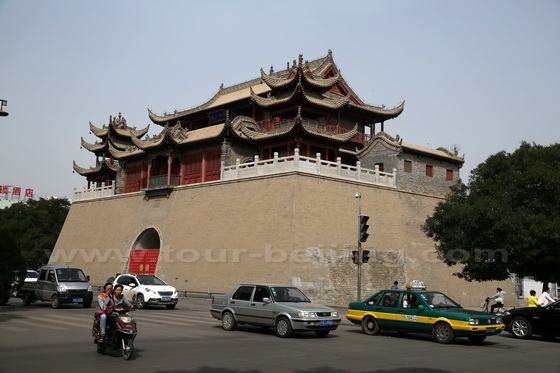
Continue to stroll along East Jiefang Road, you soon come across another huge traditional building known as “Drum Tower” standing on the crossroad of West Jiefang Road (解放西路) and Gulou Nanbei Street 鼓楼南北街(Drum Tower South North Road ).
It was originally built in 1821 in Qing Dynasty, a square structure with a height of 36 meters
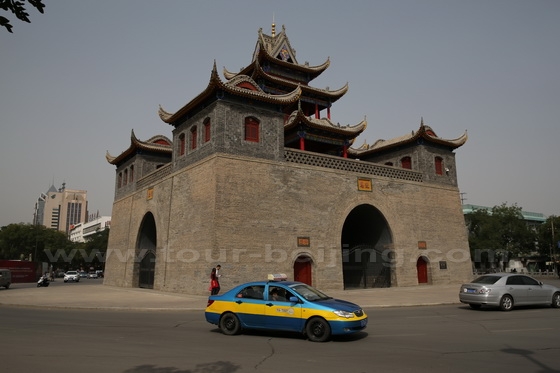
Turn left and follow Gulou Nanjie also known as Gulou Pedestrian Street (鼓楼步行街), a vehicle-free shopping street south of the Drum Tower.
The over 200 meters walking street is packed with department stores and even vendors, a good place to see the commercial aspect of Yinchuan.
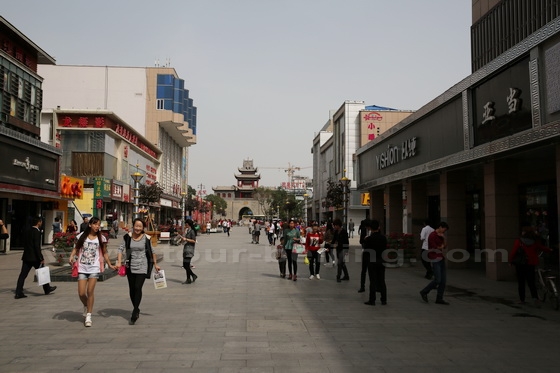
At the south end of the Walking Street is the east-west Xinhua Street(新华东街). You turn right on East Xinhua Street and soon you come across the north-south Minzu South Street (民族南街).
Minzu Street is the north-south axis of the old city of Yinchuan ( Xingqing District).
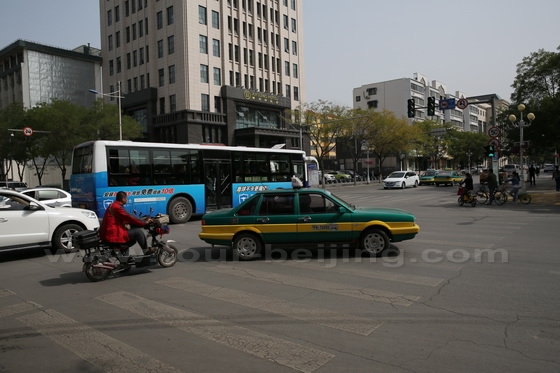
Continue to move on along West Xinhua Street (新华西街), you soon will come to a crossroad intersected by West Xinhua Street and South Jinning Street(进宁南街). A high pagoda surrounded by a red wall on the southwest corner of the crossroad. The red wall surrounded pagoda is Chengtian Temple (承天寺).
Chengtian Temple Pagoda was originally built in 1050 AD in Xixia Dynasty (1038 – 1227 ). It was later reconstructed for several times due to the earthquakes, fires and wars. The pagoda is 63.5 meters high, an 11-storey pavilion-style octagonal brick pagoda.
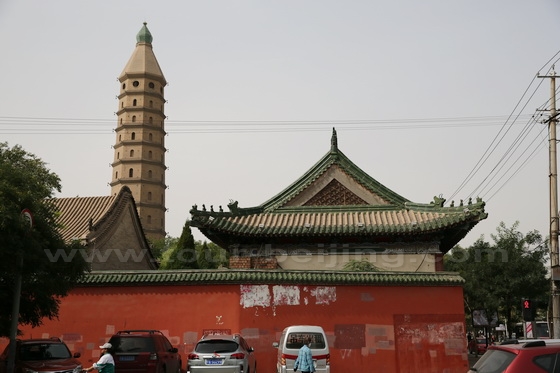
After visiting Chengtian Temple, you may continue to walk or take a taxi to Nanguan Mosque (南关清真寺). Nanguan Mosque is located at the crossroad by Changcheng Road (长城路) and South Yuhuangge Street (城隍阁南街).
Nanguan Mosque was first built in late Ming Dynasty. The present Nanguan Mosque was rebuilt in 1980 with an area of 2074 square meters.
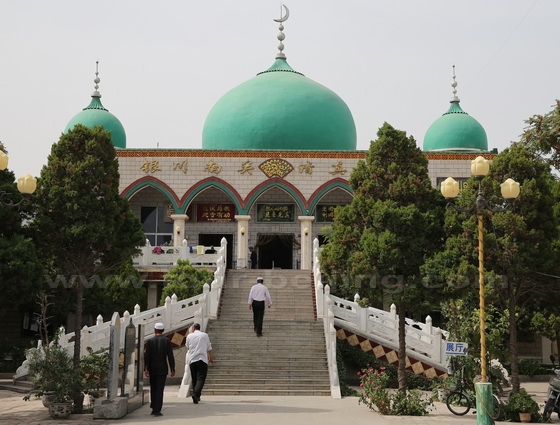
Your afternoon trip will be focused on Shuidongguo Site, about 25 km east of Yinchuan City, adjacent to the border of Inner Mongolia. Shuidonggou is the site of he Paleolithic Age with a history of over 30,000 year.
In Shuidonggou, you can see the remnants of the rammed earth Great Wall in Ming Dynasty. Shuidonggou’s developer has built the site into a huge leisure park infused with recreational elements such as boating, camel riding, horse cart riding and so on. A through ticket costs RMB 140.
Shuidonggou literally means “Water Valley Caves”. The zigzag valleys were formed by the digging for the earth needed to build the rammed earth Great Wall in Ming Dynasty.
In some of the valleys, caves or tunnels were dug to for soldiers to hide defending the Great Wall in Ming Dynasty. Some valleys are now dammed to contain water, becoming a limpid lake for leisure boating, hence the name of Shuidonggou.
Your visit begins with a special museum introducing the history of Shuidonggou in the Paleolithic period.
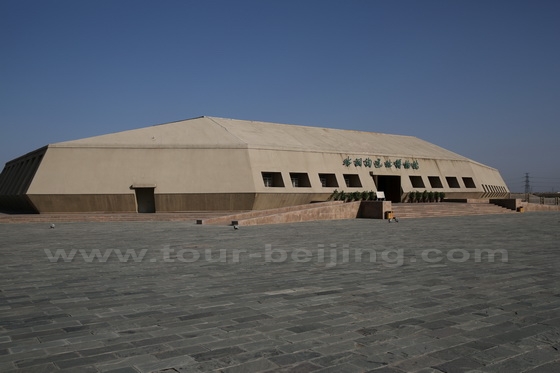
Next walk past the ancient Shuidonggou Village giving you an impression of the village and people living 30,000 years ago. Shuidonggou Site was first discovered and researched by French Paleontologists Emile Licent and Pierre Teilhard de Chardin in 1923 (Licent& Teilhard de Chardin 1925). There are several excavation sites in Shuidonggou.
The replica of the Shuidonggou Village
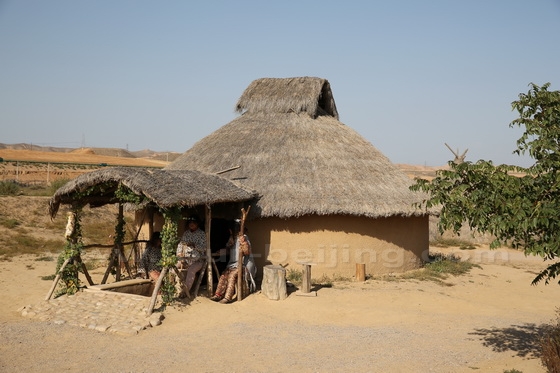
The wild and unrestored rammed earth Great Wall in Ming Dynasty is one of your highlights in Shuidonggou.

Reed Valley is a beautiful place with a wooden path allowing you walking in the valley lined with reeds waving in the wind.

East of the Reed Valley is Hongshan Lake ( Red Earth Hill Lake ), one of the valleys formed by the earth digging for the construction of the rammed earth Great Wall in Ming Dynasty.
The 5-minute boating offers a chance to see the gorgeous valleys and the wild Great Wall snaking beyond the northern side valley.
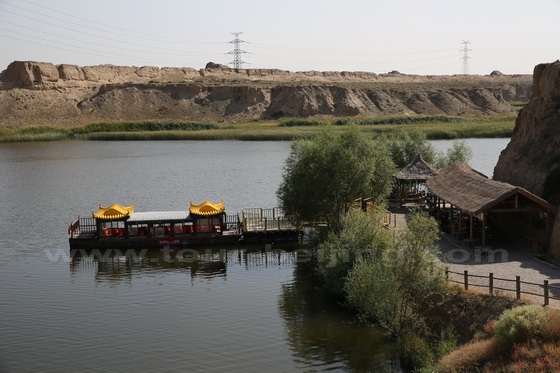
Visiting the valleys in Shuidonggou is just like running relay races . After cruising along the valley, you will be arranged to get on a horse cart for a romantic tour of the red-willow valley.
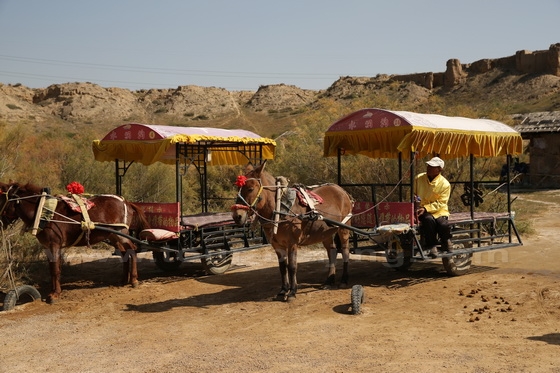
After the horse cart, you will jump on a camel cart for an intrigue tour of the valley.
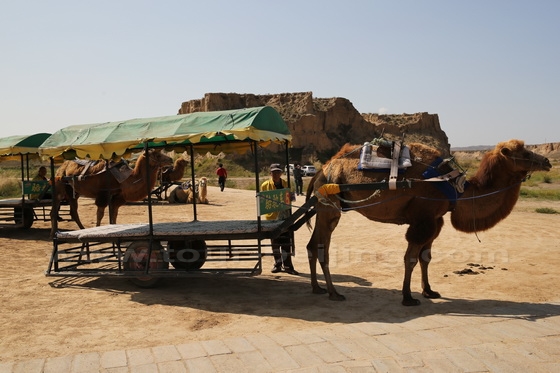
At the end of the camel cart ride, you start to explore the caves in the valleys which were once used as soldiers’ hiding caves, as a kind of dimensional military defense system including the Great Wall
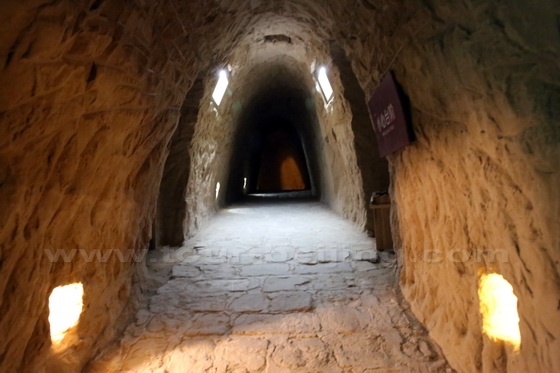
After finishing the exploration of the caves (Tunnels), you will get on a truck for your final transfer back to the main entrance and end your trip to Shuidonggou.
Second Day
Today, a full day excursion to the two most important attractions in Yinchuan – West Xia Imperial Tombs and Rock Art at Helan Mountains plus the site of West China Film Studio. The travel route of the three sites combined is a classical itinerary, a must see for first time visitors coming to Yinchuan.
There are no public buses linking the three sites on a day trip. Basically you have to use a local travel agency for an organized day trip including the three sites. It costs about RMB 320 per person for a shared group tour including the entrance fees.
West Xia Dynasty was founded in 1038 and destroyed in 1227 by the Mongols which later established Yuan Dynasty ( 1279 – 1368 ). West Xia is a powerful state in the northwest of China and rivaled Song Dynasty and Liao Dynasty. The West Xia Mausoleum was the burial site of the 9 emperors and over 253 accompanying tombs in Western Xia’s history.
The site of the West Xia Imperial Tombs is located 35 km west of Yinchuan and on the eastern slopes in the middle section of Helan Mountains. The largest tomb ( Tomb No.03 ) houses Li Yuanhao, the founder of Western Xia Dynasty. The tomb used to an earth core covered by a traditional wooden structure octagonal in shape. Now only the earth core is left, resembling a wheat stack,
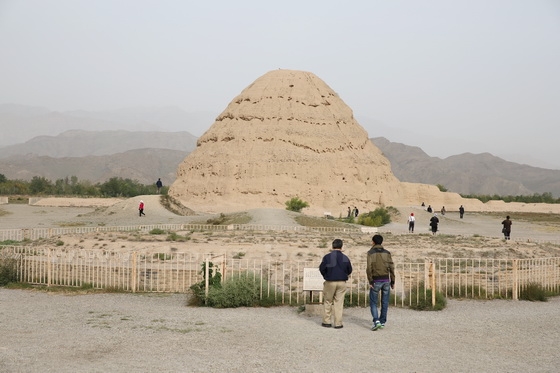
After visiting Western Xia Tombs, continue to drive northwards about 40 km along National Highway No.G110, passing by Western China Studio and Suyukou National Forest Park , reaching the site where a large amount of rock art discovered at Helan Mountain.
Helan Mountain is a natural shield in the northwest of Yinchuan Plain. The rock engravings display abundant motif of animals, plant, human face, life scene, symbols and patterns.
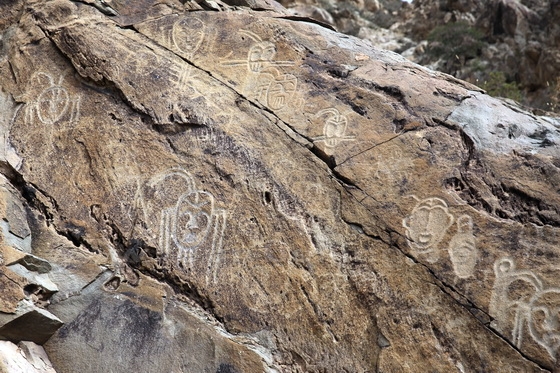
Explore the rock art dotted on the slopes on the eastern side of Helan Mountain.

At the end of your exploration of the rock art, continue to drive back about 17 km, passing by Suyukou National Forest Park and reaching the Western China Studio.
The famous studio was originally built based on two ancient fortresses – Qing Dynasty Castle and Ming Dynasty Castle. It showcases the vivid scenes of Cultural Revolutions, People’s Commune, old Yinchuan city and more scenes for film making. Many films and TV have been produced using the scenes here.
The main entrance to the Western China Studio

Reproduction of the old Yinchuan streets
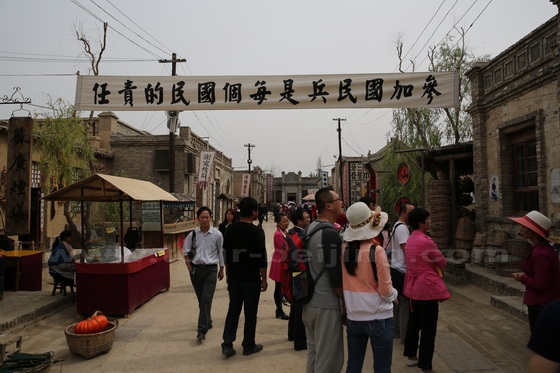
An Office of Zhen Nan Bao Production Brigade of People’s Commune
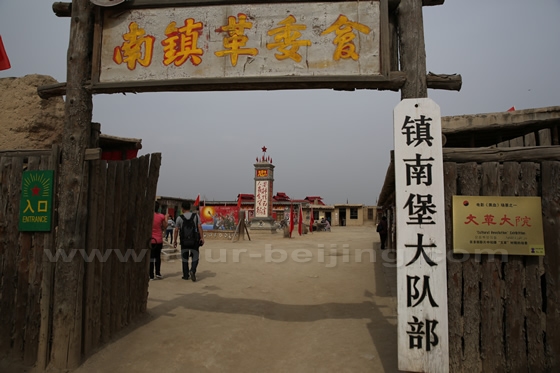
The Ming Dynasty Castle
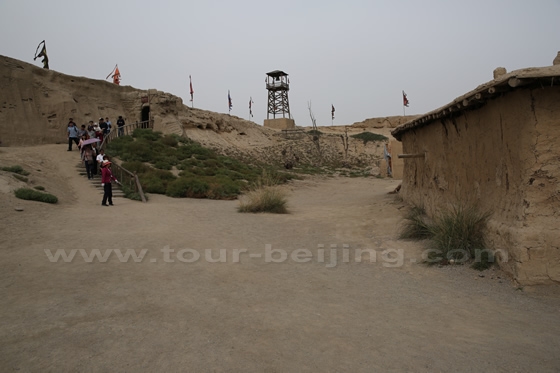
Qing Dynasty Castle
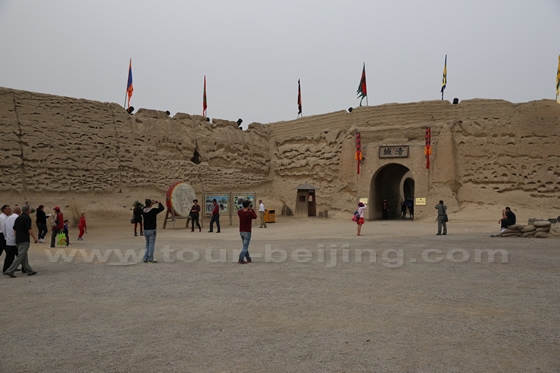
Tip: Hassle-free Yinchuan Guided Tours
 If you don’t want to go the do-it-yourself route and prefer the hassle-free escorted tours, here are some options for Yinchuan Guided Tours:
If you don’t want to go the do-it-yourself route and prefer the hassle-free escorted tours, here are some options for Yinchuan Guided Tours:
Yinchuan One Day Excursion Tour from US$ 95 p/p
Yinchuan 3 Day Tour from US$ 235 p/p
Yinchuan Car Rental with Driver
Further Readings
Top 10 Attractions in Yinchuan
How to Visit Yinchuan in 2 Days
Western Xia Imperial Tombs
Helan Mountain Rock Art
Great Wall at Shuidonggou
West Film Studio
Yinchuan Taxi






I will be in Yinchuan on 5 and 6 September. Can you arrange a tour or guide for the sights that you have on your web site for Yinchuan?
Hi Greg Lock,
Thanks for your inquiry! One of our staff members will contact you for the details. Thanks!
I will be part of a group of 4 adults who plan to be in Yinchuan for 2 days, afternoon 30 October- morning 1 November. I look forward to visiting the attractions you described.
Please advise on your rates for a 2 day tour, which should include a guide and a van.
Thank you.
ikmal
Dear Muhammad Ikmal Mohd ,
Thanks for your inquiry! One of our trip advisors will contact you for the details. Thanks!